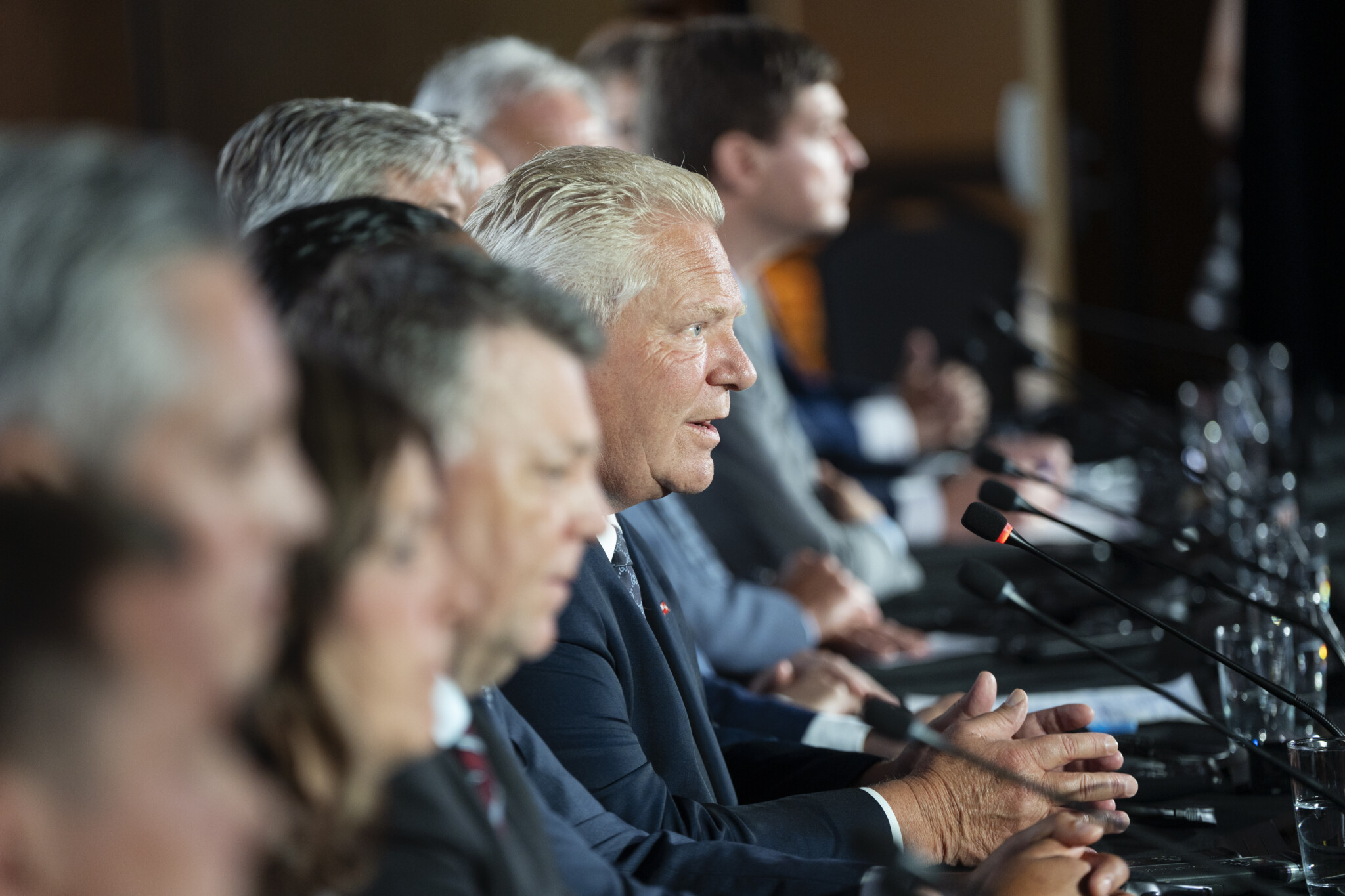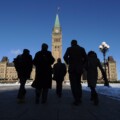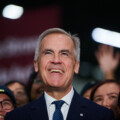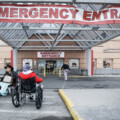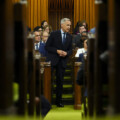If we Canadians expect federal governments to represent the better angels of our nature, it follows we look to provincial governments to be celestial beings of a decidedly lower order. It’s left to municipal governments to reflect who we really are. That may be why outcomes vary so wildly; voters who choose a Liberal prime minister happily opt for a Conservative premier or a left-wing mayor.
That may also help account for the endless sniping between jurisdictions, especially the provinces and Ottawa. As the recent premiers’ conference in Halifax reminded us, provincial leaders are quick to demand the feds “stick to their lane,” only to turn around hours later and veer noisily into oncoming traffic from Ottawa. Manitoba Premier Wab Kinew brazenly chastised Prime Minister Justin Trudeau for failing to meet Canada’s NATO-mandated two percent of GDP defence budget. The premiers of Yukon and the Northwest Territories complained about Ottawa’s Arctic policy or, rather, the lack thereof. The premiers of Ontario, Nova Scotia, and Alberta were irritated by Ottawa’s housing program because it ignored them and dealt directly with municipalities.
Clearly, knocking the Trudeau government is a popular pastime for any provincial premier with a gripe about anything from health care and transportation to inflation, global warming, and the price of eggs in China. Whether their cause was losing votes or power is uncertain—it’s probably both—but in either case, Canadian premiers carry on like hippos in water defending their territory.
Given the almost comic predictability of their outrage, one can’t help but wonder whether the premiers aren’t much more comfortable fighting villains—real or imagined—than working to improve Canadians’ quality of life and keeping the federation strong, free, and prosperous.
No surprise, then, that an Angus Reid poll released in March was a wake-up call for any premier who cared to read it: “Canadians in most provinces across the country,” the report stated, “[are] significantly more critical of their respective provincial government’s performance around service delivery and issues management than they were five years ago.”
The document continues:
[Angus Reid’s] Government Performance Index, which averages the number of provincial residents who say their government is doing a ‘good job’ on key issues such as health care, inflation, housing affordability, education and more—has seen a 15-point drop [in five years] on average across the country…A majority in every province in the country believe their provincial government is performing poorly on health care, as premiers and health ministers struggle to address the myriad problems facing Canada’s health systems. But health care isn’t the only issue provincial governments have struggled with for a half-decade. Tenured governments in B.C., Ontario, and Quebec have seen increased criticism over handling of key issues such as housing affordability and education while the new government in Manitoba deals with lingering concerns about public safety.
In other words, premiers might want to think about putting more effort into delivering on their promises in their jurisdictions, rather than picking fights with Trudeau or, whenever expedient, city mayors. Who could forget the time Ontario Premier Doug Ford, in an act of blatant hostility, cut Toronto city council in half—during a civic election? Then there was the time a Regina city councillor told Saskatchewan Premier Scott Moe to “stay in his lane” when he threatened the city over its environmental policies. Sound familiar?
Of course, it doesn’t help that the PM happens to be a pathological ditherer and unwilling decision-maker. His do-nothing approach to leadership has led to a fall from grace unmatched since the final days of Brian Mulroney. In 1993, the federal election following Mulroney’s departure saw the Conservative presence in the House of Commons cut to two seats. A similar fate may be in store for Prime Minister Trudeau’s Liberal Party.
Despite their shared hostility toward federal and civic authority, provinces have much less in common when it comes to issues such as interprovincial trade barriers, transferable professional credentials, and regulatory regimes. The best guess is that these impediments add the equivalent of a seven percent tariff to the cost of goods and services across the country. As the Business Council of Alberta (BCA) points out, “One of the profound ironies of Canada’s focus on foreign trade is that, in many cases, it is actually easier for Canadian companies to do business across international borders than it is within our own country.”
If anyone doubted the need to rethink the provinces’ role, this is it. Increasingly, it is they who are the sick men and women of Canada. Every Canadian pays a price in lost opportunity and income as a result of these provincial barriers. According to the BCA, eliminating tariffs could increase average salaries by 5.5 percent and government revenues by 4.4 percent. Most shocking, perhaps, eliminating provincial barriers could boost the country’s GDP by a whopping $80 billion.

Saskatchewan Premier Scott Moe, Alberta Premier Danielle Smith and Ontario Premier Doug Ford at the Council of the Federation meetings in Halifax, July 15, 2024. Darren Calabresef/The Canadian Press.
So where is the pressure to introduce some sense into inter-provincial relations? Though Canadians are fed up with the knee-jerk belligerence and shocking incompetence of provincial politicians, they’re largely unaware of the cost of provincial economic barriers. Even more are likely ignorant of the division of power between their federal, provincial, and municipal governments.
The question of how to make Canada’s creaky Constitution more nimble and better suited to the 21st century has yet to dint Canadian public consciousness. Will provinces remain relics of an obsolete governance system, or can they be refined to be more responsive to contemporary conditions? At a time of deep demographic division and political polarization, solutions are elusive. Even if a constitutional conference wasn’t wholly improbable, it would most likely make things worse. One thing we already know is that the geographic realities that gave birth to the provinces no longer apply. Though we like to believe Canada is defined by its landscape, technology has severely compromised such a romantic notion.
In truth, most of us inhabit a narrow strip of real estate along the 49th parallel. This raises the question of how a province such as, say, Ontario, can reconcile the interests of the densely urbanized Greater Toronto Area with those of the sparsely populated north. The latter, with an area of more than 800,000 sq. km and a population of a mere 800,000, occupies almost 90 percent of the province. The GTA, by comparison, though it occupies a mere 7,200 sq. km, is home to 6.7 million.
Even if Premier Doug Ford weren’t as conflicted as he is confused, the task would be overwhelming. Like his fellow premiers, failure seems to be the only option.
